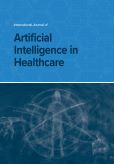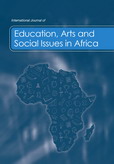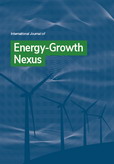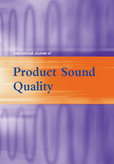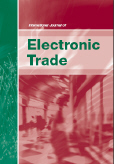Explore our journals
Browse journals by subject
Research picks
- Vitamin guidelines need ethnic equilibration
Vitamin D supplementation is associated with significantly lower risks of type 2 diabetes and depression in certain ethnic groups in the USA, according to an analysis in the International Journal of Artificial Intelligence in Healthcare of nationally representative health data. The findings suggest that the benefits of the widely used supplement are substantial but unevenly distributed.
The researchers used data from the National Health and Nutrition Examination Survey (NHANES) to look for links between self-reported vitamin D supplement use and type 2 diabetes and depression and to investigate ethnic differences.
The strongest associations were observed among Mexican Americans and African Americans. In Mexican American adults, vitamin D supplementation was linked to a markedly lower prevalence of type 2 diabetes. Among African Americans, supplement use was associated with a reduced risk of depression.
In contrast, non-Hispanic White participants and some Asian groups showed weaker or statistically insignificant association. This suggests that supplementation had limited benefit to those populations that had higher baseline vitamin D levels. The researchers point out that darker skin pigmentation reduces the rate of biosynthesis of vitamin D from sunlight in the skin. In addition, dietary shortfalls, higher rates of obesity, and socioeconomic and environmental barriers that reduce sun exposure further compound the effect.
The team says that supplementation may be most effective where deficiency is common, rather than as a universal intervention. This is pertinent as vitamin D supplementation is not without risk. Excessive intake, often referred to as megadosing, can lead to dangerously elevated calcium levels in the blood and kidney problems.
Moreover, the findings have implications for public health policy. They suggest that universal supplementation is unnecessary and that guidance should target people who will benefit the most. There is thus a need for screening and intervention strategies that take ethnicity, baseline vitamin D status, and underlying health risks into account.
Eboigbe, T.E. and Srinivasan, S. (2025) 'The role of vitamin D supplementation in improving health outcomes among different ethnic groups', Int. J. Artificial Intelligence in Healthcare, Vol. 1, No. 1, pp.4–16.
DOI: 10.1504/IJAIH.2025.149240 - AI getting down on the potholes
Most drivers are well aware of the growing threat to their vehicles from potholes. These invasive creatures have multiplied rapidly on our roads, wearing out tyre tread, cracking axles, and in some cases causing serious accidents. The costs are enormous, but those who manage and maintain the roads have limited resources to deal with the problem, even when the accident and damage risk is on the rise.
Research in the International Journal of Information and Decision Sciences has demonstrated a highly accurate, camera-based system for detecting and pinpointing potholes on roads. The work offers a new approach to how roads might be monitored and maintained to support critical transport infrastructure. It addresses the longstanding problem of identifying road surface damage soon enough to prevent vehicle damage and accidents.
Potholes usually form when a small area of the road is damaged in some way and water ingress weakens the layers beneath the road surface. This is exacerbated by freezing temperatures as that water expands and causes even more damage. If such a pothole is repaired well and in a timely manner, then the problems can be reduced.
Unfortunately, many potholes reach a hazardous size before they are even reported and so smaller potholes form near the primary holes as hardcore and gravel spewed from the initial spread across the road surface and are ground into the surface by vehicles. Similar problems subsequent to eventual repair also arise if the maintenance crew is limited to repairing only the main area and not any adjacent damage and if they fail to remove debris from the patched area and its surroundings before leaving.
Potholes, unfortunately, are not simply a matter of inconvenience, they can lead to significant damage to vehicles as well as risking serious accidents as drivers attempt to avoid them or else temporarily lose control of their vehicle when snarled by a deep pothole. Current inspection regimes are limited, wholly manual, and commonly rely on reports of damage, often after a driver and their vehicle have come unstuck.
The new approach uses ordinary cameras rather than specialised sensors to scan the road surface. Artificial intelligence, AI in the form of a deep learning model and a bespoke convolutional neural network, can analyse and classify the images based on visual patterns associated with the presence of potholes in the photos on which the system is trained.
Tests on real-world photos of roads under varying conditions of repair and disrepair showed classification accuracy of almost 99% with a good balance between false positives and negatives. Missed potholes leave hazards unaddressed, while false alarms waste maintenance resources. The new model could lead to a much smoother ride.
Dhiman, A., Kumar, M., Yadav, A.K. and Yadav, D. (2025) 'Pothole detection and localisation from images using deep learning', Int. J. Information and Decision Sciences, Vol. 17, No. 4, pp.357-370.
DOI: 10.1504/IJIDS.2025.150097 - Working dogs, the professionals
Research in the International Journal of Work Organisation and Emotion suggests that we should change our perspective on guide dogs. Guide dogs should be understood not simply as helpful companions, but as skilled operatives performing complex emotional labour that is communicated through touch and sound rather than sight. The work challenges longstanding assumptions about work, disability, and professionalism.
The study explains that guide dogs for people with visual impairment carry out a range of continuous emotional regulation comparable to that expected of human service workers. Emotional labour, a term used to describe the management of feelings to meet occupational expectations, has traditionally been analysed through visual cues such as facial expression or posture. This research finds that in guide dog partnerships, emotional competence is instead perceived, necessarily, through haptic (touch) and acoustic (sound) channels. The cues and connection are through the dog's harness and lead and what they hear through movement, breathing and equipment.
The team has used almost a decade's worth of qualitative information based on interviews, professional practice, and the researcher's own experience to assess what we might refer to as a dog's professionalism. Calmness, confidence, and focus are conveyed through subtle changes in rhythm, tension and sound. A steady pull, quiet breathing or the absence of vocalisation can signal assurance, while irregular movement or audible stress may indicate anxiety or fatigue.
Central to this exchange is the equipment. Harnesses and leads are shown to function not only as practical tools but as communicative interfaces. Much like a uniform, the harness marks when the dog is working, establishing social and temporal boundaries. At the same time, it enables a two-way flow of emotional information, allowing dog and handler to respond to each other in real time. The research suggests that this material dimension of work has been overlooked in conventional accounts of emotional labour. The implication is always that workers must be human and that emotional displays are seen rather than felt or heard. Such assumptions exclude both animals performing skilled roles and people who rely on senses other than sight.
Warda, T. (2025) 'Harnessing emotion: the haptic and acoustic professionalism of guide dogs', Int. J. Work Organisation and Emotion, Vol. 16, No. 4, pp.400–420.
DOI: 10.1504/IJWOE.2025.150228 - Is the rhythm gonna get you?
The way in which well-known music streaming platform Spotify can hold on to users depends less on headline-grabbing technical expansion than on how effectively its various features satisfy its listeners, according to a study in the International Journal of Electronic Customer Relationship Management. The research showed that personalised recommendations, ongoing platform innovation, and user participation are need to keep users committed in the long-term.
The research, based on a survey of active users of the platform, looked at how different forms of customer engagement would affect satisfaction with the service and, in turn, whether those users stay loyal. This timely analysis comes at a point in the evolution of the industry when competition is growing and pressures from artists and users alike are intensifying.
Four key engagement drivers were analysed. These are Spotify's recommender systems, technological innovation, user-generated content, and perceived product quality. Overall user satisfaction was seen as a mediating factor of these four factors, giving users the choice of should I stay, or should I go? The biggest effect came from the recommender systems. These are algorithms that analyse one's listening behaviour and then suggest new music, playlists, or artists based on one's activity. If users felt that those recommendations were appropriate, then they reported higher satisfaction with the service. This aspect of music streaming services thus emphasises just how important personalisation can be as the streaming libraries grow larger.
The team also found that technological innovation was a positive for many users. Features that improve usability or listening continuity, such as smoother playback across devices, were all seen as a benefit. In addition, user-generated content, such as shareable playlists, was seen as a useful benefit to staying with the platform. The study suggests that such tools foster a sense of ownership and community, and so attachment to the platform.
Santoso, A.S. and Johanes, S. (2025) 'Engagement in rhythm: decoding the drivers of customer loyalty in Spotify's music platform', Int. J. Electronic Customer Relationship Management, Vol. 15, No. 3, pp.151–173.
DOI: 10.1504/IJECRM.2025.148915 - Spud be good to me
Research in the International Journal of Mathematical Modelling and Numerical Optimisation has looked at how direct heating with infrared could be used to dry food for preservation more efficiently, more predictably, and more sustainably, than do current approaches.
The researchers have modelled the movement of heat and the loss of moisture in food dried using infrared using a potato slice as a test sample. Their findings suggest that infrared drying offers precise control and can be scaled up.
Drying is one of the oldest and most important methods of food preservation, particularly in regions where refrigeration and storage infrastructure are limited. Standard hot-air drying is energy-intensive and inefficient, and can reduce food quality. Infrared drying differs in that the energy penetrates the food and this avoids the issues associated with surface heat transfer. It thus speeds up moisture loss and makes the process more uniform.
The team's simulations of the infrared drying process were compared with previously published experimental data and found to agree closely with it. Having validated the model, the team could then test how different operating conditions might affect the drying process. The results show that moisture evaporation increases sharply at the start of the process before settling into a quasi-steady state, in which conditions change more slowly. Crucially, the evaporation rate rises in proportion to the square of the infrared temperature, underlining how sensitive drying performance is to radiation intensity.
The model might be used by food scientists and producers to investigate and control desiccation of food with the potential for reducing food waste, a growing problem around the world.
Tudu, B., Barman, N., Chattopadhyay, H., Simlandi, S. and Chatterjee, S. (2025) 'Mathematical and numerical modelling of coupled heat and moisture diffusions during infrared drying of a potato slice', Int. J. Mathematical Modelling and Numerical Optimisation, Vol. 15, No. 4, pp.400–416.
DOI: 10.1504/IJMMNO.2025.149428 - Bricolage and optimism
Entrepreneurship is commonly seen as underpinning innovation and economic growth. However, it also carries significant psychological burdens, from stress and isolation to a pervasive fear of failure. Research has tended to focus on the financial and operational aspects of entrepreneurship, so the mental health of entrepreneurs remains underexplored. Work published in the World Review of Entrepreneurship, Management and Sustainable Development has now looked at how two factors, entrepreneurial bricolage and dispositional optimism, can shape psychological wellbeing among entrepreneurs.
Entrepreneurial bricolage is the practice of creatively pulling together available resources to overcome challenges and capitalize on opportunities. This resourcefulness helps entrepreneurs build resilience, reduce stress, and regain a sense of control in volatile business environments. Dispositional optimism, on the other hand, is the tendency to expect positive outcomes, a trait that has been linked to improved emotional regulation, greater life satisfaction, and enhanced job satisfaction.
The team examined a range of independent studies and have drawn out from them a model that integrates these two factors, showing how they interact to affect mental health. The findings reveal that both bricolage and optimism play complementary roles in promoting psychological resilience. Entrepreneurs who engage in bricolage experience higher job satisfaction and more positive emotions and those with higher dispositional optimism report greater life satisfaction in addition to positive job outcomes.
This model emphasizes that entrepreneurial success should not only be measured in economic terms but also by psychological wellbeing. As the study points out, fostering a better understanding of how entrepreneurs manage their emotional challenges could improve their long-term sustainability and mental health.
Although the current research is not wide-ranging, the review has enough evidence to offer a new framework for future research, particularly in examining the long-term effects of these factors across different cultural and economic contexts. This work calls for a broader view of entrepreneurial success, one that acknowledges the importance of mental health and emotional resilience as essential components of a thriving entrepreneurial ecosystem.
Al Saeed, F., Alaskar, A. and Ebie, S. (2025) 'The truth about bricolage, dispositional optimism, and psychological wellbeing in entrepreneurship: evidence from a systematic review', World Review of Entrepreneurship, Management and Sustainable Development, Vol. 21, No. 5, pp.20–44.
DOI: 10.1504/WREMSD.2025.150397 - Feel the city breakin' and everybody shakin', but you're stayin' afloat
Financial literacy is an important factor in determining how well micro, small and medium enterprises (MSMEs) can withstand economic shocks, according to a review in the International Journal of Business Innovation and Research that has surveyed a decade's worth of research in this area. The review essentially shows that stronger financial skills among business owners significantly improves the capacity of their company to adapt and survive during periods of disruption.
MSMEs account for the vast majority of businesses globally and employ a large proportion of the workforce. They can be vulnerable in times of crisis, such as a global economic downturn, a pandemic, or during periods of major international conflict. The review shows that this vulnerability is not an inherent characteristic of MSMEs but depends to a large degree on the acumen of the owner.
Across the literature, the team identified various recurring themes. Entrepreneurs with good financial knowledge were able to manage cashflow more systematically. Those same business owners make more informed investment choices and approach credit markets with a clearer understanding of risks, repayment structures, and borrowing costs. In addition, prudent debt management, effective liquidity planning and strategic decision-making were important in building company resilience.
The researchers also point out that there is a growing convergence of financial literacy with digital literacy. As digital financial tools, so-called fintech, become embedded in business practice, the two forms of knowledge increasingly reinforce each other. Fintech is no longer a peripheral tool in MSME operations, but is central to how such small businesses function.
The review, however, also identified persistent gaps in the way research in this area is carried out. There are inconsistent definitions of resilience, fragmented international evidence, and limited inclusion of demographic variables such as gender, age and socio-economic status. These shortcomings, the researchers argue, might limit efforts to build evidence-based training programmes and financial policies that reflect the diverse conditions in which the world's myriad MSMEs operate.
Esomar, M.J.F., Sumiati, S. Wijayanti, R. and Aisjah, S. (2025) 'Digital financial literacy and resilience in MSMEs: a bibliometric systematic literature review', Int. J. Business Innovation and Research, Vol. 38, No. 8, pp.1–30.
DOI: 10.1504/IJBIR.2025.150149 - Businesses innovating under pressure
Start-up companies facing economic uncertainty and tightening resources are changing our conception of innovation, according to a review in the International Journal of Business Innovation and Research. The review examined 347 papers published from 2000 to 2025 and found that scarcity is increasingly being treated not merely as a barrier but as a catalyst for new products, business models, and social outcomes. This finding is particularly true of emerging markets, where institutional support is often weakest.
The researchers examined four related models of resource-constrained innovation: frugal, inclusive, reverse, and constraint-driven entrepreneurship. Frugal innovation is typically defined as designing affordable solutions by doing more with less. It has broadened into a strategic approach that emphasises accessibility and relevance to local contexts rather than simple cost-cutting. Inclusive innovation extends this logic by involving marginalised communities directly in the creation of products and services intended for their benefit, shifting innovation from a top-down exercise to one based on participation and empowerment.
Reverse innovation, once viewed as an exception, has become a distinct approach wherein ideas originating in lower-income countries diffuse into wealthier markets. This challenges long-standing assumptions that technological and managerial know-how flows only one way from the developed world to the developing nations.
The study then argues that resource-constrained entrepreneurship links all three models, showing how start-ups rely on improvisation, bricolage (the creative repurposing of available resources) as well as social networks to develop solutions without formal backing or substantial capital.
The team found that scholarship in the early 2000s concentrated on conceptual discussions of institutional voids, gaps in infrastructure, regulation or markets that force firms to innovate differently, and on grassroots ingenuity. More recent research reflects technological shifts on the global scale, with growing emphasis on sustainability, digital transformation, and impact-oriented business models.
The review concludes that understanding how innovation emerges under constraint is becoming strategically vital for investors, governments, and businesses as economic, environmental, and social pressures intensify worldwide.
Yadav, M., Kumar, M., Goswami, A., Tiwari, N.K., Amoozegar, A. and Rani, P. (2025) 'Innovating under constraints: a bibliometric and systematic review of frugal and inclusive innovations in start-up ecosystems', Int. J. Business Innovation and Research, Vol. 38, No. 8, pp.31–55.
DOI: 10.1504/IJBIR.2025.150148 - Sustaining South African smallholders
Government grants aimed at boosting smallholder farming in South Africa are not delivering lasting improvements in business viability, according to research in the International Journal of Sustainable Agricultural Management and Informatics. The study suggests that while financial support has helped reduce immediate production pressures, many smallholders remain unable to implement sustainable practices. This highlights deeper structural weaknesses in the way public assistance is designed and delivered, according to the work.
Many regions across South Africa rely on small-scale farming to support the rural economy. But, many in a region such as Waterberg District in Limpopo Province experience high failure rates. Grants are available to ease financial constraints and encourage participation in local markets, but in practice, the study found that short-term gains rarely addressed long-term survival without ongoing subsidies.
In their survey of local agribusinesses, the researchers heard that farmers receiving support described noticeable reductions in production costs and improved yields, suggesting that these grants are not misdirected. But, the benefits simply didn't last. Many recipients became dependent on continued state assistance, a pattern the researchers link to persistent gaps in managerial capacity, limited technical skills, and weaknesses in the grant allocation process itself. Many businesses failed even when they had ongoing subsidies.
The researchers thus argue for more rigorous selection criteria to ensure grants reach farmers with viable development plans. In addition, there is a need for better oversight to ensure that allocated funds are used appropriately. The team also stresses that there is a need for integrated support beyond a simple injection of cash, such as targeted training in business management and improved agricultural extension services. There is a need for public programmes that offer farmers with technical advice as well as better coordination among local agencies involved in rural economic development.
Makunyane, M.K., Pretorius, M., Venter, M., de Bruyn, C. and Sztando, A. (2025) 'Government grants towards sustainability of agribusiness in local economic development', Int. J. Sustainable Agricultural Management and Informatics, Vol. 11, No. 5, pp.1–15.
DOI: 10.1504/IJSAMI.2025.150276 - AI got you babe, when it comes to making medical music
The ethical and artistic debates aside, there are good reasons for research into artificial-intelligence systems that can generate music. A new system described in the International Journal of Arts and Technology has improved on the quality and coherence of low-cost computer-generated music for use in music therapy and mental-health support.
The new approach combines two influential machine-learning approaches, long short-term memory networks, or LSTMs, and a multi-scale attention mechanism. This allows the system to overcome the shortcomings of previous algorithmic composition methods, side-stepping erratic structure, avoiding repetitive melodies, and extending emotional range.
LSTMs are a class of recurrent neural networks designed to preserve information over long sequences, making them well suited to modelling time-based data such as music. In the current work, the team used multi-layer LSTM structures with residual connections, a method that stabilises learning by allowing information to bypass certain network layers when needed. In addition, multi-scale attention allows the model to focus dynamically on musical features as they play out over different timespans.
Attention mechanisms, widely used in natural-language processing. Conventionally, they help AI systems weigh the importance of different inputs and when this is applied to making music, it allows the simultaneous consideration of local motifs, longer-term harmonic movement, and rhythmic development.
Tests of the new approach led to clearly coherent music, improved stylistic control, and more musical variety. Such qualities have proved difficult for generative models to balance until now. This means that an appropriate prompt for the generative AI could create music tailored to specific therapeutic needs.
While there are those who lament the emergence of AI music on streaming platforms and elsewhere to the detriment of songwriters and musicians, and perhaps rightly so, the researchers suggest that their system might have use in music-assisted therapy sessions for adolescents. Though preliminary, the results suggest that it is possible to tailor AI compositions to make music that helps improve sleep quality and reduce stress.
The team says that their model's ability to encode emotional nuance could make it useful for clinical and wellbeing contexts. This could be important where known recorded music may not fit the medical requirements precisely or may simply add music-licensing costs to cash-strapped healthcare facilities.
Li, L. (2025) 'Music intelligent creation method based on LSTM and multi-scale attention', Int. J. Arts and Technology, Vol. 15, No. 6, pp.1-25.
DOI: 10.1504/IJART.2025.150181
News
Inderscience journals increasing issue frequency in 2026
Inderscience is pleased to announce that the following journals are increasing their issue frequency from 2026:
International Journal of Computational Vision and Robotics
Increasing from 6 to 8 issues per year
International Journal of Electronic Business
Increasing from 4 to 8 issues per year
International Journal of Electronic Marketing and Retailing
Increasing from 6 to 8 issues per year
International Journal of Medical Engineering and Informatics
Increasing from 6 to 8 issues per year
Prof. Sangbing Tsai appointed as new Editor in Chief of International Journal of Ultra Wideband Communications and Systems
Prof. Sangbing (Jason) Tsai from the International Engineering and Technology Institute in China has been appointed to take over editorship of the International Journal of Ultra Wideband Communications and Systems.
Prof. Yiping Wang appointed as new Editor in Chief of International Journal of Aerodynamics
Prof. Yiping Wang from Wuhan University of Technology in China has been appointed to take over editorship of the International Journal of Aerodynamics.
Prof. Shancang Li appointed as new Editor in Chief of International Journal of Information Privacy, Security and Integrity
Prof. Shancang Li from Cardiff University in the UK has been appointed to take over editorship of the International Journal of Information Privacy, Security and Integrity.
Prof. Chi-Yuan Chen appointed as new Editor in Chief of International Journal of Computational Intelligence Studies
Prof. Chi-Yuan Chen from National Ilan University and Fo Guang University in Taiwan ROC has been appointed to take over editorship of the International Journal of Computational Intelligence Studies.
